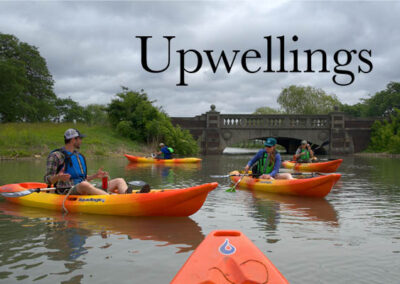Celebrate and experience our Great Lakes fisheries heritage while traveling Michigan
From lighthouses to shipwrecks, Michigan is rich in maritime heritage tradition. Great Lakes fisheries – fish and people who fish – have significantly benefited coastal communities, the Great Lakes region and the nation throughout history and still today. Ecologically, economically and recreationally valuable, Great Lakes fisheries have supported people and communities for generations. Great Lakes fish and fishing – tribal, commercial, and recreational – have shaped the culture, economy, and quality of life for people in Michigan.
A new Great Lakes Fisheries Heritage Trail offers opportunity to explore the past, present and future of the lakes through the lens of fish and fishing. Museum exhibits and educational opportunities, events and experiences along this trail highlight our fisheries heritage, ecology, management, and the economic and social issues that have defined Michigan’s coastal communities.
Valued Great Lakes fisheries:
Of national significance, the Great Lakes encompass more than 11,000 miles of shoreline and contain about 20 percent of world’s surface freshwater. The lakes are home to a diversity of Great Lakes fish species valued for their food and recreational contributions, ecological and economic significance.
- Food – close to 150 million pounds of Great Lakes fish were harvested annually at the turn of the twentieth century; these fish were consumed locally and also preserved by salt and ice to be shipped by boat, train and truck to help feed the growing populations across the country. Today, nearly 50 million pounds of fish are sustainably harvested for food.
- Fun – 1.8 million U.S. anglers enjoy fishing recreationally in Great Lakes waters today. With Michigan bordering four of the lakes, it comes as no surprise that fisheries contribute greatly to recreational tourism from coast to coast.
- Economy – Great Lakes fisheries contribute $4 billion to $7 billion in economic value annually through fishing-related sales, commercial and charter fishing, community tournaments and coastal tourism.
- Ecology – at least 179 species of fish contribute to biodiversity and healthy Great Lakes ecosystems; and many ecological issues of the past, from water quality to invasive species introductions, remain as relevant and important today.
Explore the Great Lakes Fisheries Heritage Trail
The Great Lakes Fisheries Heritage Trail network represents a partnership among museum, maritime heritage, and fisheries partners cooperating across Michigan to promote our fisheries heritage. The collective efforts of these partners is helping to preserve and interpret historical artifacts, enhancing local communities and heritage-based tourism, and offering educational opportunities focusing on Great Lakes literacy and stewardship.
The trail includes museums, coastal fishing communities, fish markets and processing facilities, events, research and science centers throughout Michigan. Visitors are offered unique opportunities to explore the dynamic social, technological and environmental changes that have shaped today’s fisheries. View an interactive map of Great Lakes Fisheries Heritage Trail sites online.
Want to learn more about our Great Lakes fisheries heritage? In future articles, we will explore the fisheries heritage stories as told through the partners and places located along the trail. A Michigan Sea Grant publication The Life of the Lakes: A Guide to the Great Lakes Fishery also offers a more in-depth look at the this diverse, dynamic and valuable Great lakes fishery, exploring: Ecology and Management, Today’s Great Lakes Fisheries, History of the Great Lakes Fisheries and the Future of these resources.


